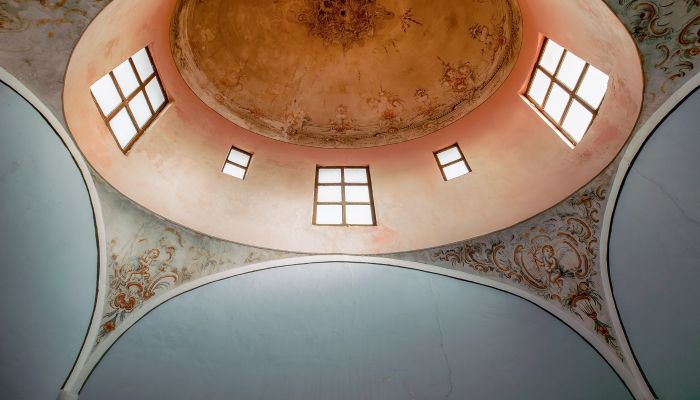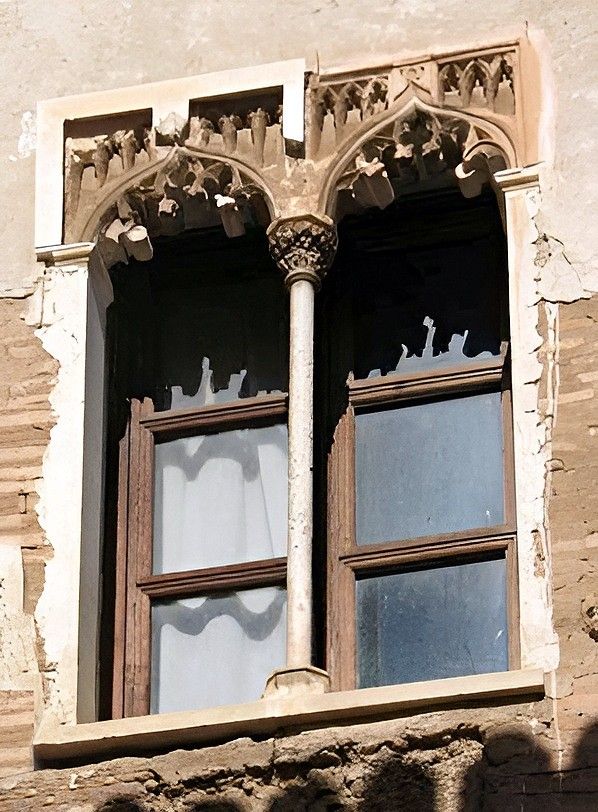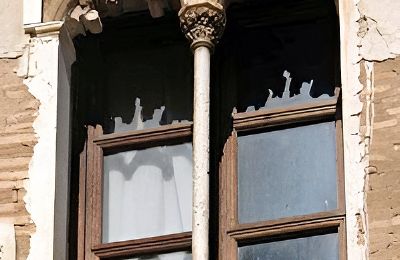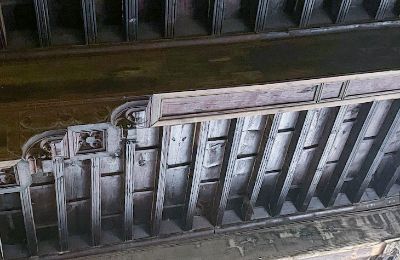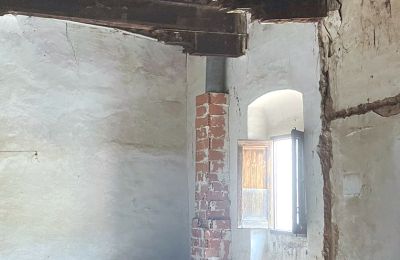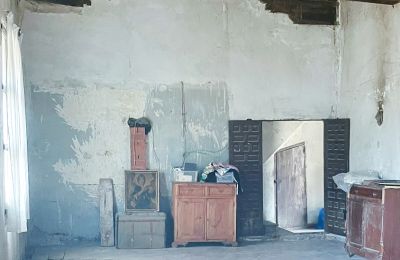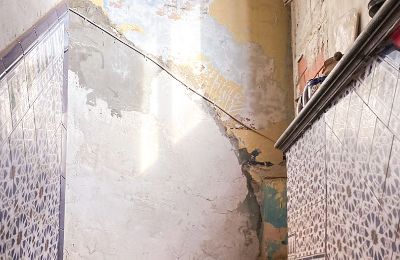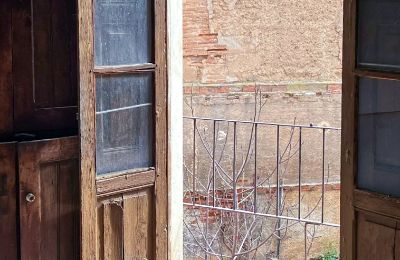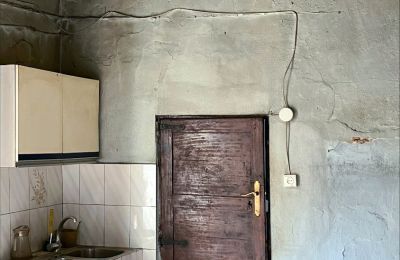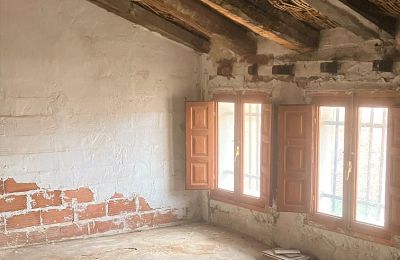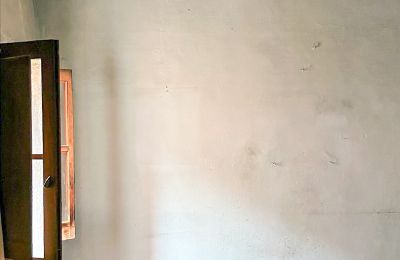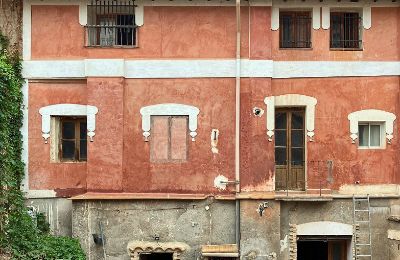Built in the 15th century, this building served as a residence for canons until the 19th century. It is now known as the "Casa del Diablo" (House of the Devil) because around 1836 it housed a prominent anticlerical revolutionary nicknamed "El Diablo Royo" (The Red Devil), both for his red hair and his rather unsavoury conduct. Taking advantage of Mendizábal's Disentailment, he acquired a considerable number of ecclesiastical properties, including the house in question.
Architectural Features
On the exterior, a section of Muslim masonry wall appears, interrupted internally by the construction of cellars. The wrought iron grille covering an external opening dates from the 15th century and is decorated with zigzag incisions along the border, hand-engraved with a chisel, accompanied by arrowhead ornaments with similar incisions; the ensemble is topped by a vegetal ornament.
An important decorative element is the mullioned window adorned with two cusped conopial arches resting on a column with a cylindrical shaft, capital decorated with carved vegetal motifs and an octagonal abacus; the base, also octagonal, is half-covered due to the later enlargement of the window. The adjacent window would have been very similar, though it was destroyed during renovation work.
The façade, built of rammed earth, was originally plastered and decorated with sgraffito work similar to the decorative motifs of the grille, of which only small fragments remain.
Interior Layout
The interior accommodates the needs of the period, with cellars in the lower part and a cobbled ground floor with dependencies for the stables, whose entrance ceiling is decorated with a coffered ceiling of carved corbels with Gothic motifs. On the first floor, the noble hall stands out, covered with a magnificent coffered ceiling with richly carved rafters repeating the decoration of the window already described, which is displayed in the interior of the hall, creating unity throughout the ensemble.
Historical Context of Daroca
The town of Daroca, situated in the centre of the Jiloca river valley, was founded in the late 8th century by Arabs from Yemen who brought the Islamic religion and irrigation culture to these lands. Centuries earlier, in the narrow ravine now occupied by the Calle Mayor, there was a Celtiberian settlement. From this city, the central Iberian ranges and their valleys were structured, forming a political and commercial centre during the Muslim period. El Cid, at the end of the 11th century, subjected it to tribute, and the Campeador spent several months there recovering from a lengthy illness. Conquered in June 1120 by King Alfonso I of Aragon, it was granted a charter of repopulation in 1142 that included a vast territory of almost ten thousand square kilometres and more than two hundred villages, between the Ebro valley and southern Teruel, and the frontier with Castile and the lands of Montalbán and Maestrazgo.
The town of Daroca grew with new quarters and suburbs throughout the 12th century thanks to the numerous and varied peoples who came to Daroca from France, Castile, Aragon, Navarre and Catalonia. During the Middle Ages, three religious communities coexisted in Daroca: the Christian, which was the majority and dominant; the Muslim, with a population of more than three hundred members who gathered around their own quarter with their mosque and services; and the Jewish, which became the third aljama of Aragon in the 13th century.
As the centre of the famous and still-mourned Community of Villages of Daroca, though excluded from it, it was the seat where Courts of the kingdom were held. The city, which lost its Jews (expelled in 1492) and its Moriscos (in 1610), continued to be embellished in the 16th and 17th centuries with new palaces and buildings. However, it was in the mid-16th century that the inhabitants of Daroca constructed their most colossal work, perhaps after the walls. This is the famous Mine, a gigantic tunnel five hundred and twenty metres long, six metres wide and seven metres high that passes through a mountain and was excavated so that storm waters would not traverse the city centre—several times the water destroyed numerous houses—and would have an outlet to the river. The Mine is probably the most important hydraulic work of modern Europe.
Daroca maintained its importance as an economic and cultural centre in the 18th and 19th centuries, and although the railway arrived at the end of the 19th century, it gradually began to lose the dynamism of previous centuries, as it failed to adapt its antiquated economic structures to the new industrial situation that was beginning to spread across Europe. Nevertheless, it continued to maintain a certain artisanal and agricultural prestige. The 20th century had two distinct phases: it began with great hopes, with the population increasing thanks to the installation of small industries, the development of dry farming and the boom in commerce, but from 1940 onwards it entered an unstoppable demographic and economic regression.
Conclusion
This particular cultural monument could become a true gem after appropriate restoration.
Source: Daroca Town Council

